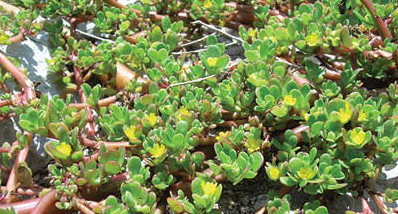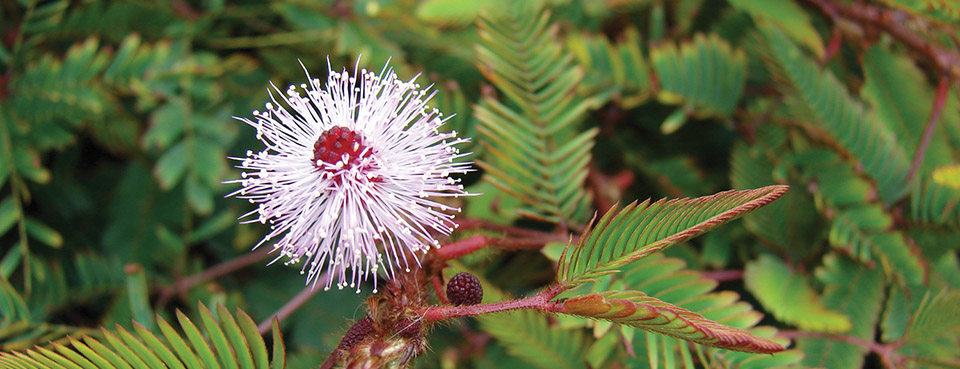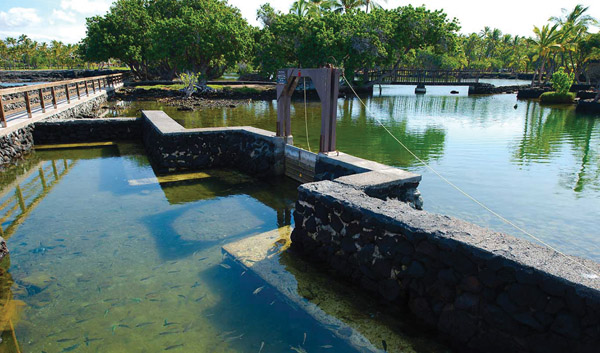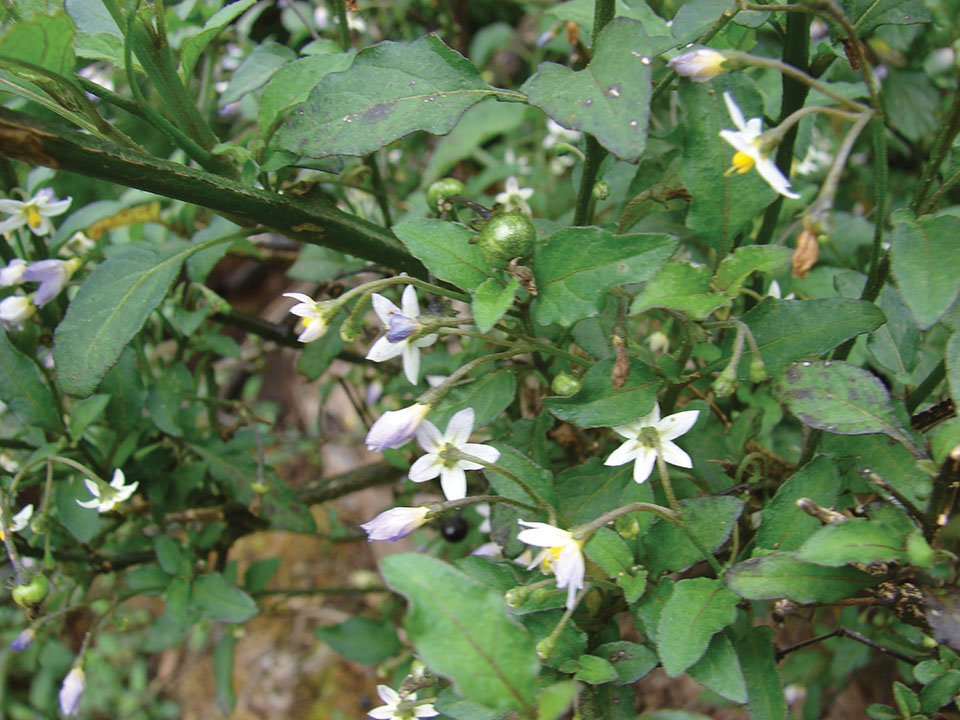
Healing Plants: Pōpolo – Foundation of the Hawaiian Pharmacy
 By Barbara Fahs
By Barbara Fahs
Related to tomatoes, eggplant, and peppers in the nightshade family, pōpolo, also known as Solanum nigrum or black nightshade, was a common medicinal plant in Hawai‘i until modern times.
Like its culinary relatives, pōpolo is a small plant, growing to no more than three feet tall and sporting fruits that resemble small black peas. It’s likely a native of Hawai‘i, according to Dr. W. Arthur Whistler in his book, Polynesian Herbal Medicine. It grows in widespread areas of the US mainland, many other countries, and throughout Polynesia, including the Hawaiian Islands. You might find it growing wild in both windward and leeward areas, from sea level to 7500 feet.
Medicinal Uses
Dr. Whistler states in the same book, “According to a well-known folktale, Lonopuha, the ‘god of healing,’ injured his foot with a digging stick and was instructed by the god Kāne to use pōpolo leaves to heal the wound. The leaves were used and the foot immediately healed.”
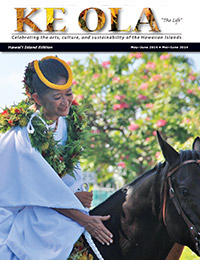
Other ailments for which the pōpolo has been used vary. The ripe black berries were prepared and fed to children suffering from thrush, a fungal infection that mainly afflicts the mouths of infants.
When juice is extracted from the berries and leaves and then consumed, the effect is laxative.
Young leaves were plucked from the plant and boiled like spinach, giving relief for colds, sore throats, and coughs.
The juice of the leaves and ripe berries was used alone or in compounds for all disorders of the respiratory tract and for skin eruptions.
The leaves were pounded with salt and applied to wounds, cuts, and abrasions.
In other parts of the world, Solanum nigrum and the similar Solanum americanum have been used to treat such varied ailments as epilepsy, leprosy (Hansen’s disease), eczema, shingles, cataracts, cirrhosis, arthritis, different types of cancer, asthma, and roundworms, to name just a few included in the book, Medicine at Your Feet by David Bruce Leonard, L.Ac.
David Leonard also gives instructions for gathering pōpolo in Hawai‘i, telling readers to harvest it any month of the year. It’s best to gather it “from plants standing on their own rather than from a large group. If one gathers from a large group, the others will become jealous for not having been chosen.”
How to Grow Pōpolo
You might have pōpolo growing on your property as a wonderful weed and not even know about it. If you want to introduce it, collect berries from a friend’s plant and allow them to dry out. Then open them and scatter the tiny seeds in different parts of your property. Plants will pop up and grow wherever the conditions are suitable. White flies sometimes attack this plant. These white, powdery-looking flying insects are only about 1/25 of an inch long and occur mainly on the undersides of leaves. They suck sap from the host plant, which causes the plant to lose vigor and wilt. Eventually the leaves turn yellow and die, and the entire plant can die if you fail to treat it with yellow sticky traps or insecticidal soap spray.
Caution Regarding Consumption of this Plant
According to Dr. Roger Baldwin, author of the book, Hawai‘i’s Poisonous Plants, “This plant is highly toxic on the mainland, but Polynesians have used a variety that is both nontoxic and delicious. Until about 40 years ago it was safe to eat wild pōpolos. Then the toxic mainland variety was introduced to Hawai‘i, so now it is not safe to eat wild pōpolos. If you grow the nontoxic Polynesian variety it should be safe to eat. The rule now is: don’t eat pōpolos unless you know they are nontoxic, and don’t ever eat pōpolos from the mainland.”
David Leonard also advises in his book: “Do not use except under professional supervision.” ❖
Notes/Info/Sources
David Bruce Leonard. Medicine at Your Feet. Roast Duck Producktions, 2012.
Dr. W. Arthur Whistler. Polynesian Herbal Medicine. National Tropical Botanical Garden, 1994.
Dr. Roger Baldwin. Hawai‘i’s Poisonous Plants. Hilo, Hawai‘i, Petroglyph Press, 1979 (out of print).
Photos courtesy Forest and Kim Starr
